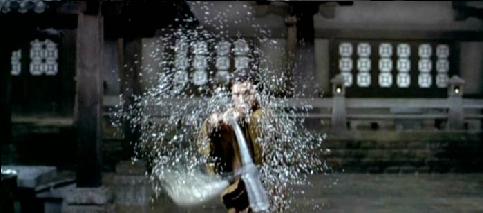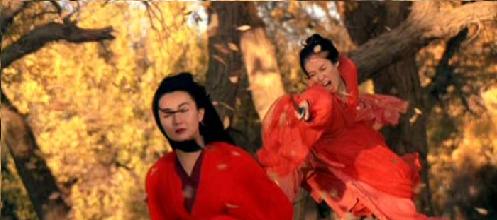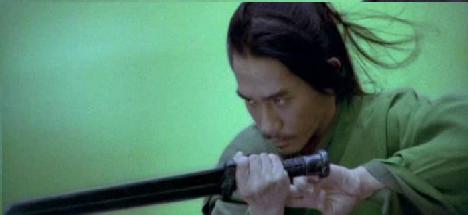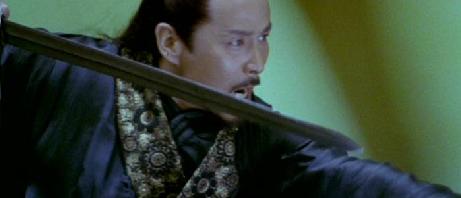The Zhang Yimou film, Hero portrays multiple viewpoints and possible perceptions of the story, from the unreliable narrations of Jet Li’s character, Nameless.
This article I am writing takes some basis in an article from American Cinematographer, in which Christopher Doyle states in journal entries,
- “We chose white to suggest the truer sequence, and we chose red to suggest that passion has a different truth. Like the West from Aristotle until Newton, Chinese conceptual systems associate color with elements, objects, parts of the body and sounds.
In the Chinese tradition, green is wood, anger and the eyes. Red is fire, the veins and joy. Yellow is earth and desire. White is metal, skin, hair and sorrow. Our basic color, black, is water and fear, not the negation of color some would assume.
- I guess someone deserves a PhD if he applies all of those concepts to Hero. As far as I’m concerned, these colors are nothing more or less than what they are.”

Nameless’s primary color is black. This is what the director settled on for his main film color, along with cinematographer Christopher Doyle. It represents a more down to earth tone in some scenes, the scenes where the unreliable narrator’s events may speak some truth (at least more than others) in a fact sense, rather than emotional sense.

Black is the filmmaker’s representation of Fear and Water. In scenes with the King, or fights with Nameless, the colors are black. The fight between Sky and Nameless takes place in the rain- water. Water is also a symbol for purity in a symbolic sense, and black is used in the pure, factual truth scenes, such as the fight with Sky and Nameless’s meetings with the King. Nameless wear’s black- factual truth, in scenes that supposedly actually happened, such as the final fight with Snow.
Red and Yellow

Yellow vs. Red- when Moon and Snow fight over the affections and death of Broken Sword, they are red fighting in a sea of yellow. In this essence, they are fighting for their combined, conflicting passions in a field of desire, as yellow represents desire. Decisiveness, in which, had the true motivations of the characters not been what the story was leading towards, the proposed fight between Moon and Snow would make very much sense, considering both their passions for Broken Sword.

Green

Green is anger, and during the fight with Broken Sword, the King’s green veils are ripped down, stripping the palace back down to black. If Black represents fear in China, and the King has become black over the next ten years, then his fear is two fold- he creates fear for the other countries with his massive, black army, but his palace has been stripped down to Black- without the green it is obvious (as with the help of the nearly empty chamber), that the King has become quite afraid for his life, in something as simple as his chamber’s natural color tone.

Blue and White

Blue is primarily the King’s perception of events. The second fight between Nameless and Snow has her dressed as blue- translucent, as described by cinematographer Christopher Doyle. In the perception of this fight, as the King still believes Nameless has come to assassinate him as part of a plot between him, Snow, and Broken Sword, he sees all three as blue, as on the same side. After killing Snow, Broken Sword fights Nameless in blue as well. The final iteration of the past events in the story is told in white- with the final fight of Snow and Nameless being in a brutal, one move of sorrow. She lives, but she knows she has in a sense betrayed her love for Broken Sword, and has felt betrayed with his decision to leave the king alive. The truest emotion in this movie is sorrow.

It is a movement back to white and black by the end.

The candles in this shot, at the very last scene, have become white to our view, when throughout the movie they were black and orange, flowing in front of the king. The King has been moved to the task of executing Nameless, something we see in his eyes as a regretful action. His candles, in the same place as the archers afterwards, represents his sorrow for calling death upon Nameless with the final arrow volley.